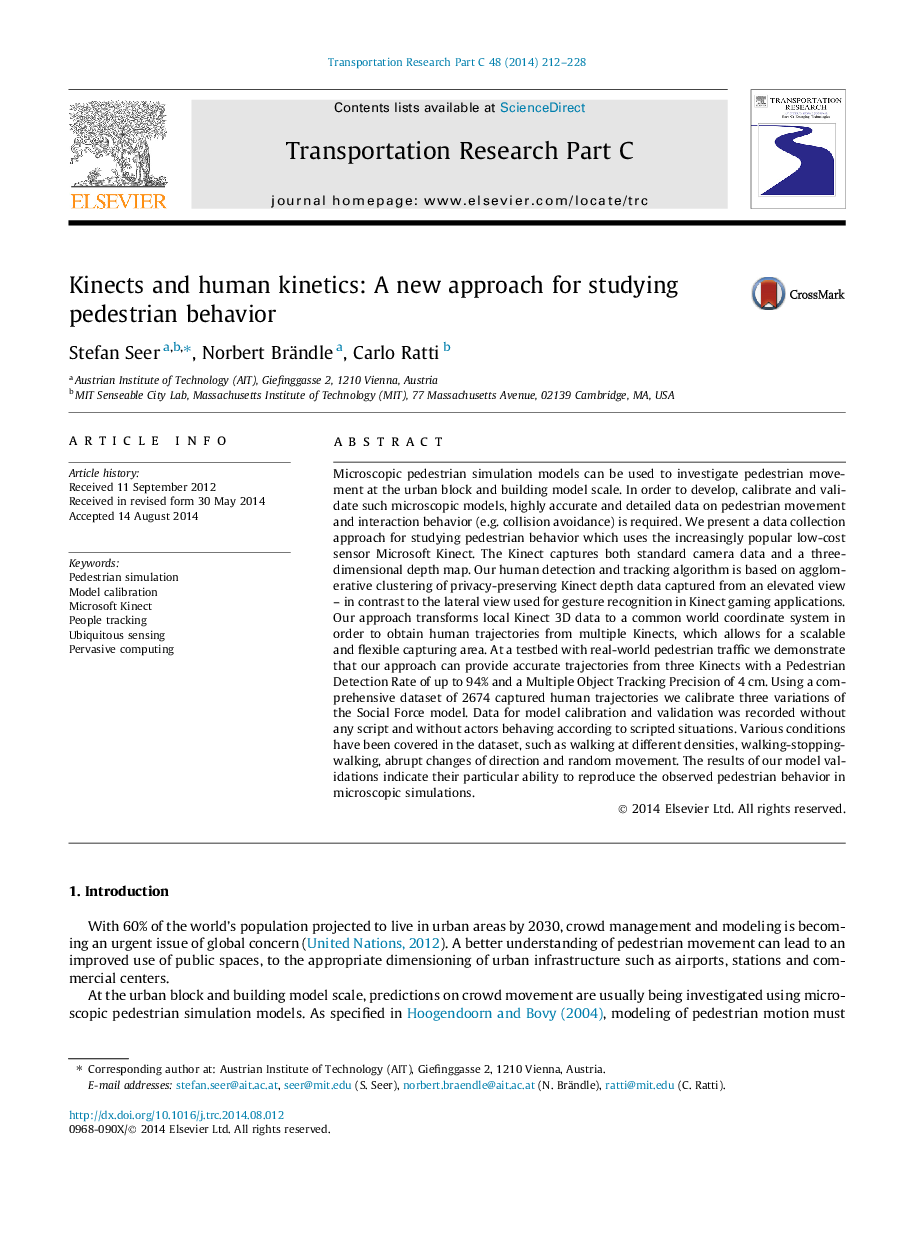| Article ID | Journal | Published Year | Pages | File Type |
|---|---|---|---|---|
| 6936966 | Transportation Research Part C: Emerging Technologies | 2014 | 17 Pages |
Abstract
Microscopic pedestrian simulation models can be used to investigate pedestrian movement at the urban block and building model scale. In order to develop, calibrate and validate such microscopic models, highly accurate and detailed data on pedestrian movement and interaction behavior (e.g. collision avoidance) is required. We present a data collection approach for studying pedestrian behavior which uses the increasingly popular low-cost sensor Microsoft Kinect. The Kinect captures both standard camera data and a three-dimensional depth map. Our human detection and tracking algorithm is based on agglomerative clustering of privacy-preserving Kinect depth data captured from an elevated view - in contrast to the lateral view used for gesture recognition in Kinect gaming applications. Our approach transforms local Kinect 3D data to a common world coordinate system in order to obtain human trajectories from multiple Kinects, which allows for a scalable and flexible capturing area. At a testbed with real-world pedestrian traffic we demonstrate that our approach can provide accurate trajectories from three Kinects with a Pedestrian Detection Rate of up to 94% and a Multiple Object Tracking Precision of 4Â cm. Using a comprehensive dataset of 2674 captured human trajectories we calibrate three variations of the Social Force model. Data for model calibration and validation was recorded without any script and without actors behaving according to scripted situations. Various conditions have been covered in the dataset, such as walking at different densities, walking-stopping-walking, abrupt changes of direction and random movement. The results of our model validations indicate their particular ability to reproduce the observed pedestrian behavior in microscopic simulations.
Related Topics
Physical Sciences and Engineering
Computer Science
Computer Science Applications
Authors
Stefan Seer, Norbert Brändle, Carlo Ratti,
